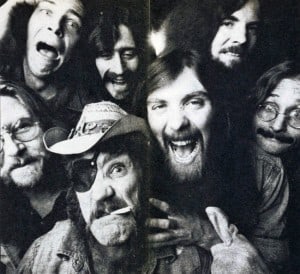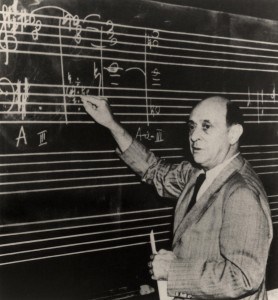Enough with you and your puny opinions about the death or dearth of music, writes Peter Kearns, he knows that It Came From Beneath, where it all happens.

A FEW DAYS ago after Rolling Stone magazine put Kim Kardashian on the cover, Sinead O’Connor declared that music is dead. What took her so long? Maybe she just doesn’t bother with the mainstream enough to hear the clear evidence, or the internet enough to notice the people already saying these things, and if so, who could blame her? You could argue that music died the day Dr Hook were on the cover of the Rolling Stone, or at least when they wrote a song about it. Some say it was 10 years prior when the Beatles burrowed up, some say mid ’50s when rock ‘n’ roll clocked in, some a few decades earlier when tuneful romanticism fell headlong into atonalism and other erotic fetishes. I’m sure there were many complaints in 1800s Europe when frenzied audience members hurledtheir bloomers at a writhing Paganini or Liszt. Why stop there? I suspect thousands of years ago, some teenage Mesopotamian rebel carved out the first lute in order to get a flash beneath some local’s all-over body coverer. That’s probably why underwear was invented. See what music is responsible for? First it puts the knickers on you and thousands of years later it rips them off again. Come on Music, I see through your feigned contrariness – that was the plan all along, wasn’t it?

More recently in 1995, Lenny Kravitz prodded us with the song ‘Rock And Roll Is Dead’, which a few months later was responded to by the Prince b-side, ‘Rock ‘n’ Roll Is Alive! (And It Lives In Minneapolis)’. But the cold hard fact is this: Music isn’t dead. In fact five percent of it is 100 percent alive. Don’t believe the guys that say all the melodies have already been written either. They haven’t, at least not in their future context. An original and interesting melody can be constructed, but its constituent pieces have more than likely already existed elsewhere. And I don’t mean in the cosmos or any of that inspiration/channelling rubbish, I mean in pre-existing music. I’m sure anyone could string a tune together tomorrow where, for example, one melodic line could find a precedent in a cello part from Mozart, trace another to an oboe part from Wagner, a Doors organ melody or AC/DC lick over there, and another line from Chopin, etcetera. Not on purpose of course, but the point is that it’s extremely unlikely or impossible to make a melodic phrase of any kind that hasn’t already been done. But that was probably already the case by the turn into the 20th century anyway. Some of the late Liszt stuff was wild to say the least, and he died in 1886.

So, I hear you exclaim in your teenage room, “Okay, what about Schoenberg and 12-tone music then, huh? Huh?!” Good question! Schoenberg basically interrupted himself in the early 1900s when the very listenable atonality of his pieces like ‘Pierrot Lunaire’ gave way to the approaching 12-tone abyss where composition became all about a pure new technique: Using all twelve notes before you could repeat one. Composition became even more about what was going on beneath the surface – the underwear, if you will. Schoenberg no longer needed the inspiration or the channelling, if he’d ever relied on them before, now he could paint by numbers. But I’d say he would’ve debuted quite a few melodic moves due to his total abandonment of the key system. The irony is that Arnold Schoenberg, the guy who eschewed melodic inspiration, was actually responsible for the most advanced innovation in music for hundreds of years. Go figure. So whether the music appealed to you or not was irrelevant, the quality event had occurred, the horse had bolted. So some thought music was finally dead then – underwear or no underwear. So, dead or undead, it’s all just puny opinion. Steer clear of that. It’s the eunuch at the orgy. PETER KEARNS














